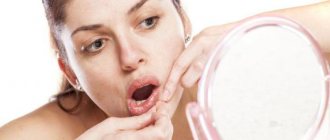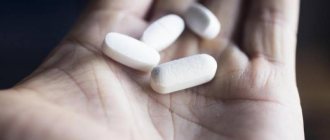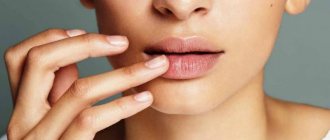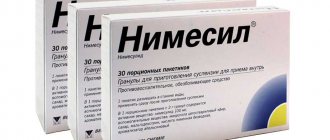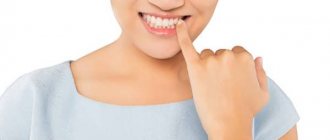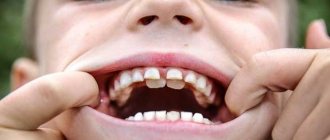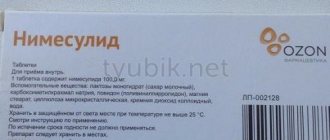Features of facial skin damage
Wounds can form in any area of the face for various reasons:
- mechanical and thermal damage;
- exposure to chemicals;
- surgical intervention;
- acne;
- dermatological or infectious diseases.
Compared to wounds on other parts of the body, the treatment of injuries on the face has some peculiarities due to anatomical features:
- active facial expressions;
- constant muscle movement;
- close location of blood vessels;
- a very thin layer of fat cells.
In case of significant damage to the skin and muscles of the face, sutures can be applied within 36 hours. In other areas of the body, tissues need to be sutured within 24 hours to avoid microbes from penetrating into the deeper layers of the skin.
Possible difficulties during treatment
Anatomical features may cause some difficulties in the healing process of injuries on the face:
- Edge separation. If large wounds occur in the lower two-thirds of the face, healing may be slower due to facial movements.
- Intense bleeding that is difficult to stop.
- Infection. The penetration of microbes occurs when the rules of wound treatment are violated, therefore, in case of significant damage to the facial skin, local and general antibiotics are often prescribed.
- The occurrence of edema accompanies almost all injuries on the face. This not only affects the appearance of the victim, but can also slow down the tissue healing process.
In addition, almost all wounds on the face cause discomfort to a person when eating and communicating. Due to the constant movement of the facial muscles, the victim experiences discomfort and pain.
Causes of mouth ulcers
The causes of mouth ulcers can be either diseases that affect the oral cavity and occur only in it, or general diseases of the body, one of the manifestations of which are mouth ulcers. Local ailments include all kinds of stomatitis. Common diseases include pathologies of the gastrointestinal tract and various infectious diseases, for example, syphilis. In these cases, the underlying cause should be identified and treated, and then the manifestations should be dealt with.
READ ALSO: white mouth ulcer: causes and treatment
Sometimes there are injuries to the oral mucosa, caused accidentally or involuntarily. Some people constantly bite the inside of their cheeks due to malocclusion or neurological problems. Trauma to the mucous membrane can be caused by a dentist when performing manipulations in the patient’s mouth. Such wounds go away on their own and quite quickly.
Types and symptoms of stomatitis with photos
Doctors do not have a single version about the causes of stomatitis. Most often, the appearance of ulcers in the mouth is associated with the immune response to the penetration of foreign agents, from its point of view. In the photo you can see manifestations of stomatitis.
READ ALSO: How can you treat mouth ulcers in a child?
Depending on the provoking factor, the following types of stomatitis are distinguished:
- herpetic,
- aphthous,
- candida,
- bacterial.
Herpetic stomatitis is called so because of its similarity to herpes. With this type of lesion, greyish-colored blisters form, located mainly on the floor of the mouth. Ulcers and blisters can also be located on the palate, the inside of the cheek and the tongue (we recommend reading: an ulcer has appeared under the tongue: what is it and what to do to eliminate it?). They cause itching and discomfort.
Aphthous stomatitis presumably appears due to an adenovirus infection or an autoimmune reaction of the body to a foreign agent. First, red spots appear in the oral cavity, which gradually swell and become covered with a white-gray coating. Necrosis of epithelial tissue occurs underneath, and an infiltrate forms inside. After some time, the necrotic epithelium is rejected, and the remaining ulcer begins to heal.
Candidal stomatitis is caused by fungi from the genus Candida. Bacterial stomatitis is caused by pathogenic microorganisms found in the oral cavity. This may be staphylococcus, streptococcus and other pathogens of infectious diseases. All these types of stomatitis manifest themselves as a consequence of an infection brought into the mouth against the background of a reduced immune capacity of the body.
The most susceptible to the disease are:
- children under two years of age whose immunity is just developing,
- people who have been taking antibiotics and drugs that suppress the immune system for a long time,
- patients weakened by a long illness,
- people with immunodeficiency caused by malnutrition.
Staphylococcus, streptococcus and viral infections can also cause general malaise and weakness.
Traumatic lesion
A common cause of the formation of abscesses and ulcers on the oral mucosa is trauma. Traumatic lesions are formed as a result of involuntary bite, damage caused while brushing the teeth. Injury to the mucous membrane may occur due to careless handling of the denture. Sometimes damage to the mucous membranes of the oral cavity is caused by a dentist or prosthetist during manipulations.
Other causes of mouth sores
In the clinic of some diseases, symptoms such as the formation of ulcers, pustules and other damage to the oral mucosa in the mouth may appear:
- Ulcers on the palate, tongue, cheek and mucous membranes can be the result of diseases of the digestive tract (we recommend reading: ulcers appeared on the tongue: causes and treatment).
- The tuberculosis process sometimes causes damage to the oral mucosa if Mycobacterium tuberculosis penetrates the oral cavity. As a rule, this is how the disease manifests itself in a secondary form. First, tuberculous tubercles appear, gradually they transform into ulcers on the palate, cheeks and mucous membranes. These formations are painful, may bleed and take a long time to heal.
- When Treponema pallidum, the causative agent of syphilis, gets on the oral mucosa, round formations of red or grayish color, raised at the edges, appear in the oral cavity. These formations are painless and disappear in two or three weeks. Syphilis requires immediate treatment under the supervision of a venereologist.
- With pathologies of the endocrine system and hormonal imbalances, small, light ulcers may appear that do not cause pain. They do not go away for a long time, since restoration of hormonal levels and normal functioning of the endocrine system requires a long period.
- Dermatological problems can affect the oral cavity and cause the appearance of pustules, wounds or other formations on the mucous membranes, cheeks and upper palate. Often the cause of these diseases is a genetic predisposition.
READ ALSO: How can you treat a crack in the corner of your mouth?
Treatment rules
Minor injuries can be successfully treated at home.
To do this, you must first clean them of contaminants and treat them with an antiseptic. If the injury is large, contacting a surgeon cannot be delayed. Professional help may also be needed after a few days of treating a small wound at home. The reason for contacting a medical facility may be a sharp deterioration in the condition of the wound (the appearance of pus, swelling, separation of the edges), or the opening of bleeding.
The specialist will assess the severity of the damage using several parameters:
Possible infection is indicated by redness, severe swelling of the tissue, and high temperature at the site of injury.
After the examination, the surgeon performs several actions:
- treats the edges of the wound with a professional antiseptic;
- applies stitches to the damage (if necessary);
- gives an anti-tetanus injection (if necessary);
- informs about the rules of care.
The wound on the face needs to be treated several times a day. If the damage is deep or covers a large area, this should be done in a clinic.
General recommendations
Whatever the wound, you should follow several recommendations:
- Treatment cannot be delayed; the sooner therapy is started, the faster tissue healing will occur and the lower the risk of complications.
- Do not treat the wound with iodine or medical alcohol. Concentrated liquids will burn the edges, which may delay tissue healing. In addition, such actions can leave marks on the skin, which will be very difficult to get rid of.
- For initial treatment, it is recommended to dilute alcohol or iodine with boiled water, or use hydrogen peroxide, furatsilin solution or boric alcohol.
- Do not stop bleeding with adhesive tape. It will reduce oxygen supply to damaged tissues and slow down scarring. If the wound is bleeding, after treatment you need to stop the bleeding using sterile wipes. The patch is applied a few days after the injury and changed several times a day.
- To increase overall immunity, it is recommended to take vitamin complexes during treatment. During this period, it is recommended to cancel all diets and eat more protein and plant foods. Improving your health will speed up the regeneration process.
- Choose the right form of medications. At the initial stage, it is forbidden to use oily ointments and fatty creams; they are much more effective after tightening the edges of the wound.
- If the damage does not heal for several days or signs of infection appear, antibiotics are prescribed.
First aid immediately after an injury to the face is carried out in several stages:
- removal of contaminants;
- antiseptic treatment;
- applying a bandage (sterile bandage or napkin).
You cannot keep the wound closed all the time; the bandage must be removed several times a day to ensure oxygen access.
Medicines, creams, ointments for quick treatment of wounds on the face
The rate of healing of a facial wound depends on the medications used and adherence to the care instructions received at the hospital.
Wound treatment products can be divided into several groups:
- bactericidal;
- drying;
- accelerating cell regeneration;
- antibiotics (if necessary).
Wounds are treated with bactericidal agents immediately after injury and before each application of other medications to wet areas.
These include the already mentioned hydrogen peroxide, manganese solution and iodine and medical alcohol diluted with water. After the wound has dried, these drugs are not used. Drying agents include drugs in the form of aqueous solutions or jelly. They do not block the access of oxygen to tissues, protect against penetration of microbes into the wound and accelerate the formation of a crust. These include:
The drug from Switzerland is obtained from purified calf blood, which activates the production of collagen in the skin. The gel is applied to the damaged area in a thin layer several times a day. The drug is used for all types of burns, ulcers, deep and superficial injuries.
- Actovegin is a Russian analogue of Solcoseryl.
- Eplan (water solution or napkins). The drug has antibacterial, analgesic and regenerating effects. The product is applied to the skin several times a day, the wound heals approximately three days after the start of use.
After the wound heals and stops getting wet, you can apply ointments and creams to it. They will create a protective film on the surface, speed up recovery and soften dry skin.
Tissue regeneration occurs due to components that accelerate collagen synthesis and metabolic processes in cells. Such drugs include:
- Levomekol is a combined action ointment: regenerating, anti-inflammatory and antibacterial. It can even be applied to infected wounds. Levomekol is used to heal burns, incised wounds, and purulent boils.
- Rescuer is an ointment that is used for any skin damage. The product has an analgesic and anti-inflammatory effect, normalizes blood circulation and relieves swelling.
- Bepanten. The ointment stimulates tissue regeneration, moisturizes and protects against the penetration of microbes.
- Contatubex is an ointment that heals wounds and prevents the formation of scars.
- Panthenol. The regenerating, anti-inflammatory and analgesic agent is available in the form of a spray, ointment and cream.
- Solcoseryl and Actovegin in the form of ointment.
Diseases
First you need to identify the causes of sores in the mouth. Treatment will be carried out based on this. This phenomenon may be associated with local diseases of the oral cavity. In this case, the wound will simply be an accompanying symptom that should not be ignored. Diseases that result in sores in the mouth include many ailments.
- With syphilis, ulcers always appear. In the initial stages of the disease, the sores do not cause discomfort and are presented in the form of a small circle with a red bottom. Ulcers that occur with syphilis take 3-12 weeks to heal. But after they tighten, a scar appears in the mucous membrane. During the course of tertiary syphilis, the ulcers are bloody and have a rich color. Such damage takes about 2 months to heal. It is therefore advisable to treat syphilis in a venereology department.
- This may be associated with oral tuberculosis. The course of this disease manifests itself in the form of ulcers that affect the cheeks, tongue and entire mouth. Such wounds do not hurt and visually increase in size over time. Ulcers with this disease are shallow, but loose. They often bleed and have jagged edges. Treatment should be performed in a hospital and under the supervision of a doctor.
- Another cause of sores in the mouth is necrotizing gingivostomatitis. The disease appears due to weakened immunity, trauma to the oral cavity, lack of vitamins, allergies and hypothermia. As the disease progresses, ulcers appear on the cheeks, gums, palate, tongue, tonsils, and arches. The wounds are covered with a yellow or green coating, which leads to bad breath. The sores are shallow, with uneven edges. Often such lesions lead to minor bleeding. Treatment is carried out in a hospital using medications.
- These lesions appear with herpetiform stomatitis. Ulcers with this disease resemble herpes. They are usually found on the tongue and at the bottom of the mouth. They are eliminated within a few days. But if they do not heal on their own, then medical attention is needed.
- Ulcers may appear with recurrent stomatitis. They are found on the tongue, cheeks, palate and near the lips. There is pain and discomfort while eating. To avoid complications, treatment should be performed as soon as the first symptoms appear.
- Sores form in the presence of necrotizing periadenitis. In the initial stages, small compactions are likely to occur, which after some time turn into ulcers. Wounds appear on the tongue, cheeks, lips. It is difficult for a person to eat and talk with them.
Possible consequences
If the wound on the face is not properly cared for, tissue infection may occur. This will not only slow down the healing process, but also threaten unpleasant complications:
- general blood poisoning;
- necrotization of surrounding tissues;
- damage to the facial nerves.
The products are applied several times a day only to the scar, without affecting healthy skin. You can start using such products only after the scar has hardened (after 2-3 months).
In addition to scar creams, you can use oils that are rubbed into colloidal tissue.
The scar remedy is effective if the injury mark is small. In cases where the scar area is significant, they resort to cosmetic procedures, for example, laser facial resurfacing or acid peeling.
7 Comments
I have been suffering from acne for a long time; new lesions constantly appear on my face and back. I start treatment immediately. here, first of all, an antiseptic is needed, it kills bacteria and avoids infection in the wounds. Personally, Tyrosur gel suits me, believe me, I’ve tried sooo many different “talkers”, but here I see the result of healing much faster.
My child fell badly. I'm so afraid that the abrasion will even begin to rot.
Yulia, if you handle it correctly, nothing will fester. My little boys fell all summer and had abrasions. I washed it like this, and then applied Argosulfan, this antiseptic cream is great and speeds up the healing process. So, to be honest, I didn’t even notice how quickly the abrasions went away. Now it’s easier))) School, there’s less walking, so we manage without abrasions.
Abrasions are an everyday thing, they often happen simply due to negligence, we installed an interior door at home, and until the foam dried, the spacers were left in the door frame. So I caught my hand and scratched it very hard. In my home medicine cabinet for such cases there is Reskinol - a great ointment!
Argosulfan is really powerful stuff! I had very serious wounds on my face with pus constantly oozing out! 5 days and only pink new skin, isn’t it a miracle when half of your face is scratched off, the wound was not superficial but deeper! Argosulfan has never let me down, it also takes away burns in just two minutes! Good luck everyone, stay healthy!
First, be sure to treat it with an antiseptic, and then see what’s wrong with the wound, how big and deep it is.
The main thing is not to catch tetanus from wounds or cuts. Although vaccinations need to be done on a schedule, if there is a dirty wound at the emergency room, tetanus serum will still be given on an emergency basis. And if the wound is not large, then I use argosulfan, I also apply it to children and I am sure that everything will heal without problems or scars, and for wounds on the face this is very important.
The skin on the face is called one of the main factors influencing a person’s beauty. Therefore, when wounds appear on the skin from inflammation, traces of surgical and cosmetic interventions, a person experiences a justified desire to speed up the process of skin regeneration and regain his attractiveness. How to quickly heal a wound on the face is an extremely important question, because incorrect actions or products not intended for delicate facial skin can leave a scar or increase the degree of inflammation.
What are the types of damage?
Before you find out what products help get rid of skin wounds as quickly as possible, you need to understand that there are different types of damage. Their classification is as follows:
-chemical and thermal burns;
-consequences of surgery;
- inflammation, including acne;
If there is minor damage to the epidermis, you can treat it yourself, knowing about the rules and methods of skin treatment. But if the injury to the face is extensive, you should immediately consult a doctor.
Disease prevention
Any disease is easier to prevent than to treat for a long period of time. To prevent the appearance of ulcers, it is recommended to carefully observe the rules of intimate hygiene - wash the genitals twice a day. Frequent visits to the bathroom are also not recommended.
During intimacy, you must use a condom. A barrier contraceptive will protect against infection with sexually transmitted diseases. It is also necessary to periodically visit a urologist for a preventive examination.
Regardless of the cause of wounds on the penis, during therapy you should abstain from sexual activity, avoid wearing tight underwear and trousers, and carefully monitor hygiene. If the doctor has prescribed antibiotics, avoid the consumption of alcoholic beverages for the period of treatment.
News MirTesen
Features of wound healing on the face
When figuring out how to quickly heal a wound on the face, you need to remember that the skin on the face is thin, there is practically no fat layer underneath, but the vessels and capillaries are very close to the surface of the epidermis. In addition, there are muscles on the face whose activity is very problematic to reduce. Therefore, healing a wound will be somewhat more problematic than damage in areas of the body where immobility can be ensured, for example, by applying a fixing bandage.
Healing scratches
It’s easier to learn how to quickly heal a wound on the face using an ordinary scratch as an example. Even such a minor injury to the face can become inflamed, causing redness and swelling of nearby tissues.
The purpose of the treatment is to wash and disinfect the wound, as well as its immediate healing. To do this you need to prepare:
The first step is to wash the wound with a cotton pad soaked in hydrogen peroxide. Next, you need to take a cotton swab, moisten it in alcohol and press it to the wound for a few seconds. Then you need to moisten the other side of the cotton swab with iodine and treat the skin around the scratch. Finally, a thin layer of regenerating ointment is applied to the wound.
Acne wounds
Acne or pimples are inflammation of the sebaceous glands. The etiology of this phenomenon depends on many factors, ranging from improper hygiene to endocrine diseases. Single pimples go away on their own, leaving no traces, but if you injure the area of skin inflammation (start squeezing out pimples), there is a risk of encountering the formation of scars, which will be difficult to get rid of even with the help of modern cosmetology measures. Therefore, knowing how to quickly heal a wound on the face after a pimple is very important.
After squeezing out pimples, wounds remain on the skin, in the treatment of which the cream with a bactericidal and wound-healing effect “ARGOSULFAN ®” has proven itself well. Unlike many antibacterial ointments that have long been familiar to us, to which microbes have developed resistance, it contains silver sulfathiazole, to which bacteria do not become accustomed. The active substance of the cream “ARGOSULFAN ®” has a wide spectrum of antibacterial action and promotes rapid healing of the wound without the formation of a rough scar.
There are contraindications. You need to read the instructions or consult a specialist.
How to get rid of wounds
The goal of treatment is to eliminate the underlying causes that trigger the formation of mouth ulcers. If sores in the mouth arise due to the development of another disease, then the underlying disease is treated, which in turn will lead to a reduction in the formation of wounds in the oral mucosa.
Most experts say that there is no specific treatment. A sick person and all healthy people are advised to spend more time on oral hygiene and maintaining a healthy diet.
It is necessary to give preference to those products that contain a lot of vitamin B12, phosphorus and iron. Those people who are subject to frequent stress and nervous strain need to protect themselves from this kind of negativity.
Professional methods
You can get rid of mouth ulcers using the following remedies:
- Healing ointments . Benzocaine has proven itself very well. This ointment has an anti-inflammatory effect and therefore quickly eliminates the inflammatory process. The components of the drug have an analgesic effect. Use the ointment in accordance with the recommendations of a specialist. For young children, it is best to use other medications, as Benzocaine can cause an allergic reaction. You can also use Kamistad ointment.
- Xikain gel, 2% . Helps reduce pain, relieves inflammation and destroys pathogenic bacteria and microbes. It is strictly prohibited for the treatment of small children, as it contains toxic components.
- Solcoseryl ointment also has a positive effect .
- Antibiotics . Most often prescribed for severe disease. The type of drug and duration of treatment is determined individually for each individual case.
- Painkiller injections . Their only advantage is that they quickly eliminate pain from ulcers. But, unfortunately, this kind of injection does not help get rid of the causes that provoke the disease.
Ointments for acne
You can find an ointment that quickly heals wounds on the face at a pharmacy, for example, “Synthomycin”. Its advantage is its complex effect on the skin: anti-inflammatory and antibacterial.
You can also use the following drugs:
In case of severe inflammation, when the pimple hurts and suppurates, it is best to contact a specialist who will open the pimple, carry out an antiseptic treatment and apply a regeneration agent. The dermatologist will also advise how to quickly heal a wound on the face from a pimple using modern drugs for external use.
Is it worth using iodine to heal wounds on the face?
Iodine is the most popular antiseptic. It really effectively disinfects the skin and serves as a reliable method of preventing inflammation. But when using it on the face, there is a high risk of skin scarring.
The fact is that iodine, when it gets on damaged skin, burns it, which is why the edges of the wound cannot heal. But if you need to treat the skin urgently, and there are no other products at hand, you can use iodine or medical alcohol, but with some restrictions.
Firstly, it is better to dilute the product with plain water. Having become less concentrated, it will not have such an aggressive effect on facial tissue.
Secondly, you should not apply the product directly to the wound. It is better to moisten a cotton swab with it and carefully treat the area around the wound. In this case, the edges of the wound will not be damaged, and, therefore, the chances that the inflammation will go away overnight will be much higher.
And finally, after antiseptic treatment, it is worth using an ointment that quickly heals wounds on the face.
For delicate and sensitive facial skin, it is better to find hydrogen peroxide in your home medicine cabinet and treat the skin with it.
Acne wound on face. Important treatment rules
Wounds that appear on the face from a squeezed pimple should never be lubricated with alcohol or a solution that contains alcohol. It's not only painful. Alcohol can cause severe chemical burns. Therefore, you can lubricate the skin around the wound with it. In this case it won't hurt.
You cannot lubricate acne wounds with dimexide. Although this substance has an excellent antibacterial effect, if it comes into contact with an open wound in undiluted or improperly diluted form, it can cause a burning sensation and severe pain.
But you should definitely clean your hands with alcohol before starting to treat wounds on your face after acne. This will help avoid additional infection that can come from dirty hands.
Sores on children's skin
A child's skin is much more delicate than that of an adult, but it has a significant advantage: a high regeneration rate. Therefore, wounds, cuts and scratches in babies heal much faster.
Nevertheless, information on how to quickly heal a wound on a child’s face will be useful to every person. The processing algorithm is as follows:
- First of all, you need to cleanse the skin with warm boiled water and a small amount of laundry soap.
- After this, the wound should be treated with an antiseptic without alcohol (furatsilin, potassium permanganate) and lubricated with ointment to improve regeneration.
- Wounds usually heal faster outdoors. But a child can constantly touch a lesion on the skin with his hands, introducing an infection there. Therefore, there is a reason to carefully seal the wound with a bactericidal plaster until the wound heals. After this, the patch can be removed and you can continue to use the ointment for regeneration until complete healing.
Sometimes even a small wound on a child's face can bleed quite heavily. In this case, it is better not to think about how to quickly heal a wound on a child’s face on your own, but to consult a doctor who will apply a sterile bandage to the skin.
Efficiency of ointments
Pharmacies offer many products that can speed up the healing process of shallow wounds. In fact, the process of skin regeneration occurs in any case: skin cells exfoliate, giving way to new ones, so traces of skin damage quickly disappear. But the process and speed of skin renewal differ from person to person, depending on age, health status and individual characteristics. For some people, the use of products that increase the regenerative abilities of the skin is more than justified, especially in a situation where the question is how to quickly heal a wound on the face at home.
The principle of operation of skin regeneration products is to eliminate factors that inhibit the restoration of the skin and to stimulate the process of rapid protein absorption. In other words, accelerating metabolic processes and relieving swelling and inflammation in the epidermis allows the skin to renew itself, and, therefore, heal damage faster.
What to do with the sore?
If a wound on the body does not heal for a long time, you need to reconsider your care for it and change your treatment tactics. Experts recommend:
- Change your usual lifestyle a little.
- Use medications that relieve inflammation and infection (if such pathological processes are present).
- Use medications that can speed up regeneration processes.
- Use vitamin supplements that support the body.
Small, non-inflamed wounds can be dealt with on your own at home. But if warning symptoms of serious inflammation appear, it is better not to self-medicate, but to seek medical help.
General recommendations
In order for wounds to heal well, it is important to first reconsider your lifestyle:
- To eat well. The daily diet should include a variety of foods that saturate the body with all the elements it needs. In particular, a sufficient supply of protein, provitamin A, ascorbic acid, and zinc plays a particularly important role in wound healing.
- Make time for physical activity. Scientists claim that playing sports affects the healing process of wounds. A similar effect is achieved by increasing the activity of the immune system, as well as increasing blood circulation as a result of exercise.
- No smoking. It has been established that nicotine addiction significantly slows down the healing process, which is largely due to the negative effects of the toxic components of cigarette smoke.
- Stop drinking alcohol. Alcohol reduces the number of white blood cells and proteins in the blood, which are important for normal healing. And if the injury occurs while under the influence of alcohol, the person’s risk of severe bleeding and bacterial infection increases.
In general, maintaining a healthy lifestyle and paying attention to your own health reduces the risk of long-term non-healing wounds.
Medicines
In order to speed up the healing process of skin wounds, you can use:
- Bepanten. This is a cream with dexpanthenol (a derivative of vitamin B5), its use has a positive effect on the activity of regenerative processes and the condition of the skin in general. Bepanthen is completely safe and rarely causes any unwanted effects.
- Solcoseryl or Actovegin. These drugs are based on deproteinized hemoderivative of calf blood, and manufacturers claim that their use perfectly activates regenerative processes in different parts of the body.
- Baneocin or Levomekol. Such remedies will be useful if the wound does not heal due to infection. They contain antibacterial components that successfully fight bacteria at the site of application.
Your doctor will help you choose the most appropriate treatment for skin wounds. If we are talking about serious injuries, it may be necessary to apply bandages, perform surgery, etc.
Vitamins for the regeneration of skin damage
For successful healing of various wounds, it is important to ensure sufficient intake of:
- Vitamin A.
- Vitamin E.
- B vitamins.
- Vitamin C.
- Vitamin K
Doctors emphasize that with a significant shortage of such elements, it is simply impossible to stabilize their levels with proper and balanced nutrition alone. Therefore, it is necessary to take special multivitamin complexes or single preparations selected by a specialist.
List of ointments for regeneration
Which ointment quickly heals wounds on the face is an individual question. The composition, prices and principle of action of ointments are different, and each person has the opportunity to choose the most suitable drug for himself.
For many, especially women, the face is a symbol of beauty and attractiveness, on which mood and general well-being depend. Therefore, even the slightest injury to the skin of this area gives a person great anxiety. We will tell you how to quickly heal damage and not leave scars that disfigure the most noticeable part of a person.
Prevention
To prevent the appearance of wounds in the mouth, it is necessary to follow the rules of oral care:
- Do not injure the mucous membrane.
- Brush your teeth according to the rules.
- Go to the dentist in a timely manner.
- Don't eat too hot or cold food.
- Eliminate stress and nervous tension.
- Eat more fresh vegetables and fruits.
Treating mouth wounds is a responsible undertaking. Future health depends on the chosen treatment methods. To prevent sores from becoming a daily problem, you need to monitor your health and not ignore the symptoms.
Types of injuries on the face
The face, as an open part of the body, is quite often subject to injury. Moreover, the effect on the skin is not only external, but also under the influence of internal processes. Let's take a closer look at these options:
- Abrasions. Their distinctive feature is a violation of the integrity of the most superficial areas of the skin. There is usually little or no bleeding. Abrasions cause trouble due to pain (the skin on the face is well innervated) and cosmetic problems.
- Cuts. Injury with a sharp object, the danger of which depends on the location and depth. Bleeding can be quite severe, sometimes nerves are damaged, which leads to impaired facial expressions. The treatment of such wounds should be entrusted to a specialist to prevent irreparable consequences and complications.
- Lacerations. They occur as a result of car accidents or animal bites. They are characterized by massive rupture of soft tissues with damage not only to the skin, but also to muscles, and profuse bleeding. Deep wounds are dangerous due to secondary infection and the development of purulent complications.
- Self-injury. This group is conventionally distinguished due to the fact that a person himself often damages the skin of his face as a result of improper care: acne wounds (squeezing), burns from low-quality cosmetics, and others.
Most facial injuries require consultation with a doctor, as this area of the body has its own characteristics that affect healing and the possibility of cosmetic complications.
Treatment of ulcers
Treatment tactics depend on what disease caused the ulceration of the vulva and vagina. It is also important for doctors to know the type of pathogen, the general condition of the woman and the presence of contraindications to taking certain medications.
Antibiotics are used to treat sexually transmitted diseases such as syphilis, chlamydia and gonorrhea. Most often these are drugs from the group of penicillins, macrolides and cephalosporins.
Thrush is the easiest thing to deal with. You need to take medications such as Fluconazole and Nystatin.
If the wounds on the genitals are allergic, patients are prescribed antihistamines. Among them are Zodak, Suprastin, Claritin. To eliminate irritation, Fenistil and Afloderm ointments are excellent.
Genital herpes is fought with the help of Acyclovir and Viferon.
Severe itching and pain are eliminated with Diclofenac, Ketonal or Ibuprofen.
While undergoing treatment, a woman should avoid sexual intercourse. In addition, her sexual partners are also advised to seek help from doctors.
Features of injuries on the face
Treating even superficial abrasions on the face is very different from healing wounds in other areas of the body. This is due to anatomical features:
- Increased blood supply. Facial tissues are literally riddled with small blood vessels. As a result, even a minor injury causes severe bleeding. There is a positive aspect to this - the better the blood circulation, the faster the wound heals.
- Prolonged and extensive swelling. Swelling of the tissues is caused by their saturation with blood plasma. On the face, due to the large number of capillaries, this symptom is maximum, spreads to neighboring areas and persists for a longer time.
- Facial muscles. One of the successful conditions for tissue regeneration is their complete immobility. This is difficult to achieve on the face, since during conversation or emotions an automatic contraction of the facial muscles occurs. The edges of the wound diverge, healing is inhibited. That is why, in case of facial injury, doctors recommend applying cosmetic sutures even to small cuts.
- Pain . There are many structural elements on the face: small bones, facial muscles, teeth. All of them have good innervation, so the slightest injury leads to severe pain.
The described features have a positive consequence - wounds on the face usually heal faster than in other areas of the body and are less likely to become infected.
The application of sutures in this place can be delayed for up to 36 hours (in other places this period is limited to a day).
Complications
If the course is unfavorable, wounds on the face can leave unpleasant consequences:
- Suppuration. Often this complication is a consequence of improper treatment. A wound, even the smallest one, needs to be regularly treated with antiseptics. Stitches must be placed on deep incisions. If doctors' recommendations are violated, long-term non-healing wounds on the face become infected with bacteria, and the process becomes purulent.
- Scars. The formation of connective tissue at the site of injury is a natural regeneration process. This causes a lot of cosmetic problems on the face. The more extensive the damage and the longer the recovery period, the more noticeable the scars will be. To eliminate them, there are conservative methods (absorbable creams) and surgical ones (plasty).
- Facial nerve injury. This is a more serious consequence, which, unfortunately, is much more difficult to correct. Symptoms depend on the location of the injury and include loss of sensation and movement in certain areas of the face.
Wounds on the face are always unpleasant. In this case, more than ever, it is important to follow all the recommendations of doctors. It is better to ignore the appearance at the first stage, apply stitches if necessary and regularly treat the damage, than to treat complications for a long time later.
How to quickly treat wounds and abrasions on the face. First aid
Symptoms
Modern medicine has not identified symptoms of this condition. But it is known that if there is no appropriate treatment, the wounds will appear again and again. Moreover, each time it will be more difficult to eliminate such ulcers. Particular attention should be paid to sores that do not go away after 3-4 weeks.
Symptoms of ulcers are usually similar to those of associated illnesses. This phenomenon may be accompanied by:
- a sharp increase in body temperature;
- feeling of discomfort in the mouth;
- burning and stinging in the mucous membranes and throat;
- the appearance of blood in the mouth;
- frequent headaches;
- decreased appetite;
- pain;
- deterioration of health.
Whatever the symptoms appear, you need to know how to treat wounds in the mouth. Timely measures eliminate the occurrence of complications when it will be more difficult to get rid of sores.

